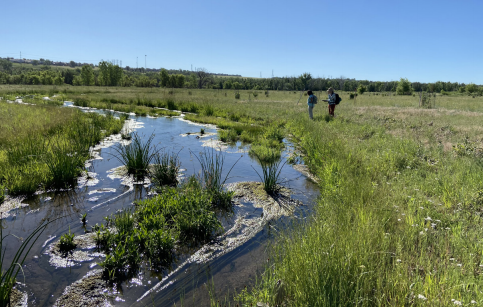The Chatfield Reservoir south of Littleton was built as a flood control measure after the devastating floods in 1965 and is the centerpiece of a beloved state park. But it now serves a new purpose: providing more water storage for the Front Range without adding a major footprint. After a three-decade planning process, the reservoir level was raised 12 feet and storage space has been reallocated to add 20,600 acre-feet of storage, including an environmental pool of up to 2,100 acre-feet.
“At first blush, this doesn’t sound so complicated. You’re taking water storage that already exists and making it multi-purpose storage without any impacts to the dam itself,” says Charly Hoehn, general manager of the reallocation project. But it was the first project of its kind in the state, so Hoehn’s team had to act as “guinea pigs” on permitting and mitigation issues.
While the project didn’t require new dam construction, it was not without challenges. State park facilities had to be moved, and there were environmental concerns, like the removal of trees and wetlands to accommodate the higher water level. The Audubon Society of Greater Denver unsuccessfully sued to stop construction, citing impacts to birds and the Preble’s meadow jumping mouse. Polly Reetz, the Audubon conservation committee chairperson, says she continues to question “whether this would even work at all” with the project’s relatively junior water rights and doesn’t think it was worth impacting “a very important birding area.”
Other green groups worked with project organizers on a mitigation strategy that placed a value on each piece of land that would be affected (accounting for impacts to wetlands and animals), then found other areas to offset any damage. The result was significant restoration to flows on nearby Plum Creek and bank stabilization primarily upstream on the South Platte River to prevent erosion. The environmental pool will accommodate timed releases to help address some low-flow conditions downstream on the South Platte River. Final approval and the completion of mitigation work in 2020 allowed the new storage to begin, but Hoehn says that the low spring runoff allowed only a “marginal amount” to be stored in its first year.


 Print
Print